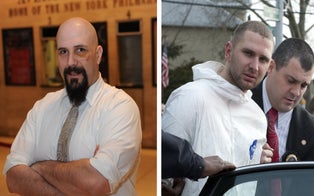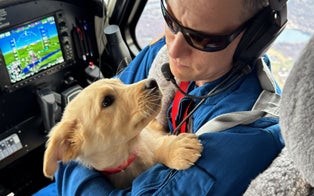After Air Force One was spotted flying over England, sleuths tracked the plane's movements on social media.
Were the president and first lady put in jeopardy by security breaches during their visit to combat troops in Iraq?
Air Force One flew to Iraq undercover, using the call sign of a cargo plane known as RCH358. But as it flew over England at 31,000 feet, a plane enthusiast spotted it and recognized it as Air Force One, taking to Twitter to post an image of the aircraft.
Other plane spotters lit up Twitter with information about its altitude, speed and likely destination to the Middle East to visit American troops.
When he landed, the president spoke about the unusual security surrounding Air Force One's flight.
“If you had seen what we had to go through, with the darkened plane, with all windows closed, no light on whatsoever. Pitch black, I’ve never seen that,” Trump said.
The trip was shrouded in secrecy but their cover was blown from the start. Marine guards are usually on duty at the White House when the president is there. When there were there no Marines, there it was obvious that Trump had left Washington.
Another clue? After a blizzard of tweets on Christmas Eve and Christmas Day, the president's Twitter account suddenly fell silent for 20 hours.
Security expert James Carafano explained the secrecy behind the unannounced trip.
"It is not just about the safety of the president, it is about the safety of everyone around the president. Sometimes hundreds or thousands of people who might be at risk because of a security breach," he told Inside Edition.
But some are claiming the president himself breached security by tweeting out a video with members of Navy SEAL Team 5 in full battle gear.
He also posed for photos, including one with Lt. Commander Kyu Lee, chaplain for SEALTeam 5.
According to the Pentagon, Navy SEALs' faces should be covered or digitally blurred.
Newsweek called Trump's post “a violation of operational security.”
RELATED STORIES





